Prune Blueberries Now, But Not Blue Hydrangeas
Prune Blueberries Now, But Not Blue Hydrangeas
Why you should wait to prune hydrangeas, and how to prune blueberries.
In mid-March we want to start tidying up the landscape. Many on Cape Cod are wondering if they can “clean up” or “cut back” their blue hydrangeas now. The short answer to these questions is no; it’s too early to prune your mophead (Hydrangea macrophylla) or lacecap (H. serrata or macrophylla) hydrangeas. If you cut these hydrangea canes back now you might be taking off the very buds that will turn into flowers next year. It’s too early to know which buds have made it through the winter and which ones have gotten zapped by the cold temperatures of 2021. See the photos for more information.
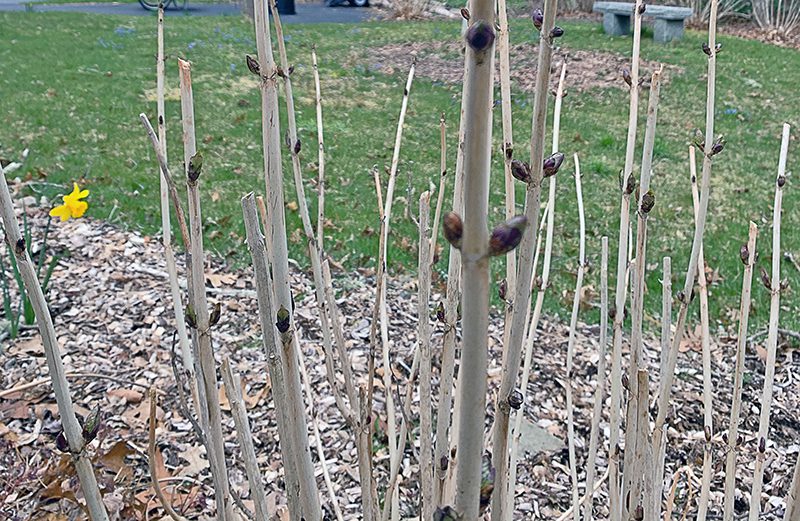
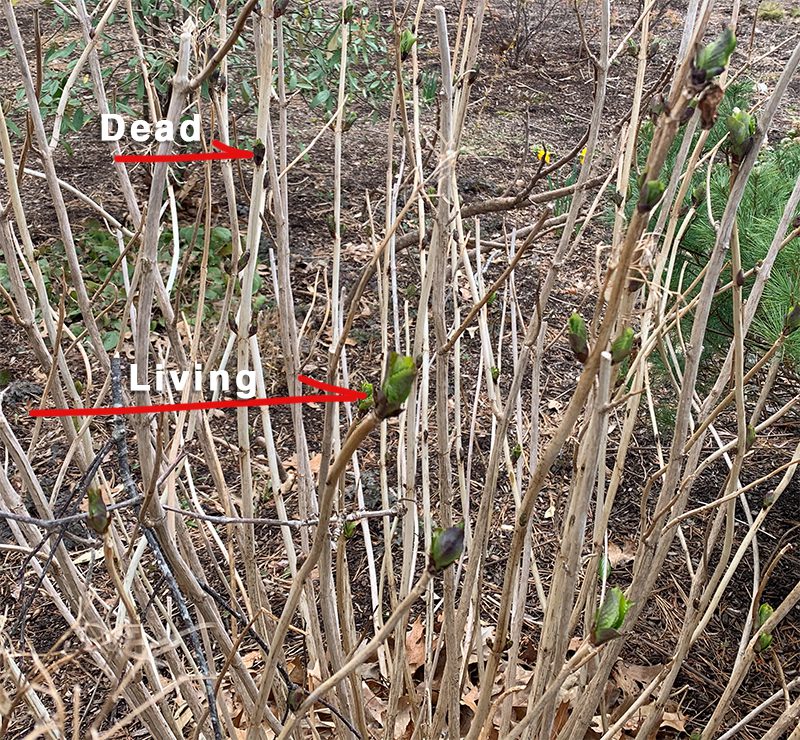
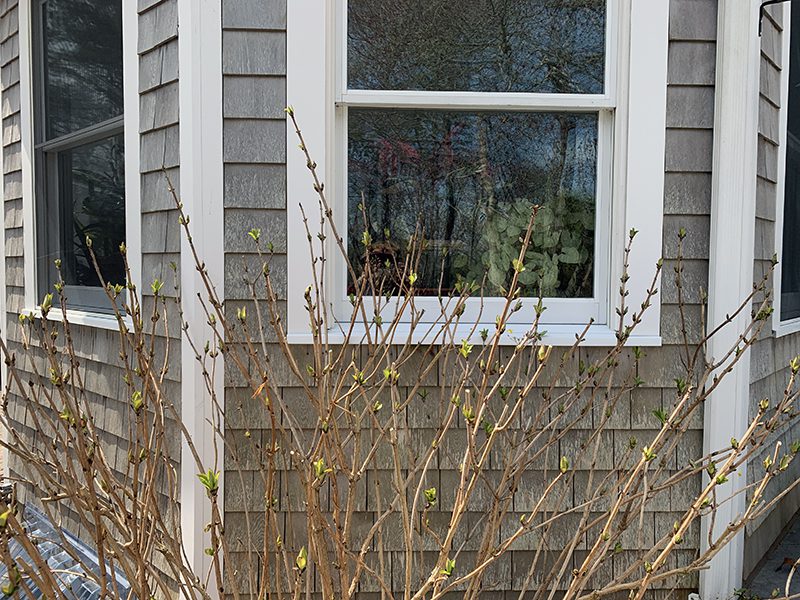

Blueberries, on the other hand, can be pruned in March or early April.
Here’s how to prune your blueberry bushes:
- Never just cut off the top part of the plant. Follow this recipe:
- First, look at the shrub and identify the largest, oldest canes. On a blueberry these will be grayish in color, and larger in diameter.
- On a young plant remove one of those large, older canes. On a plant that is 5 or more years old, or a shrub that’s never been pruned, take off three or four of those older canes, cutting about 6″ above the ground. See photos below.
- The removal of these older canes is important because that stimulates new growth from the bottom, and the newer stems will bear more fruit.
- Next, look for small branches that are heading into the center of the plant. Remove these by cutting them off where they join the main cane.
- The third step is to look for stems or branches that are crossed and rubbing each other. Remove one of those. Which one? Leave the strongest looking, or the one that’s growing out, away from the center of the plant. If one of them has a wound from the rubbing, take that one off.
- The fourth step is to look for any remaining stems that look weak or are funky in shape and remove those.
- Normally, at this point you are done. Do not prune the top in order to make the plant shorter. They’re called “high-bush blueberries” for a reason.
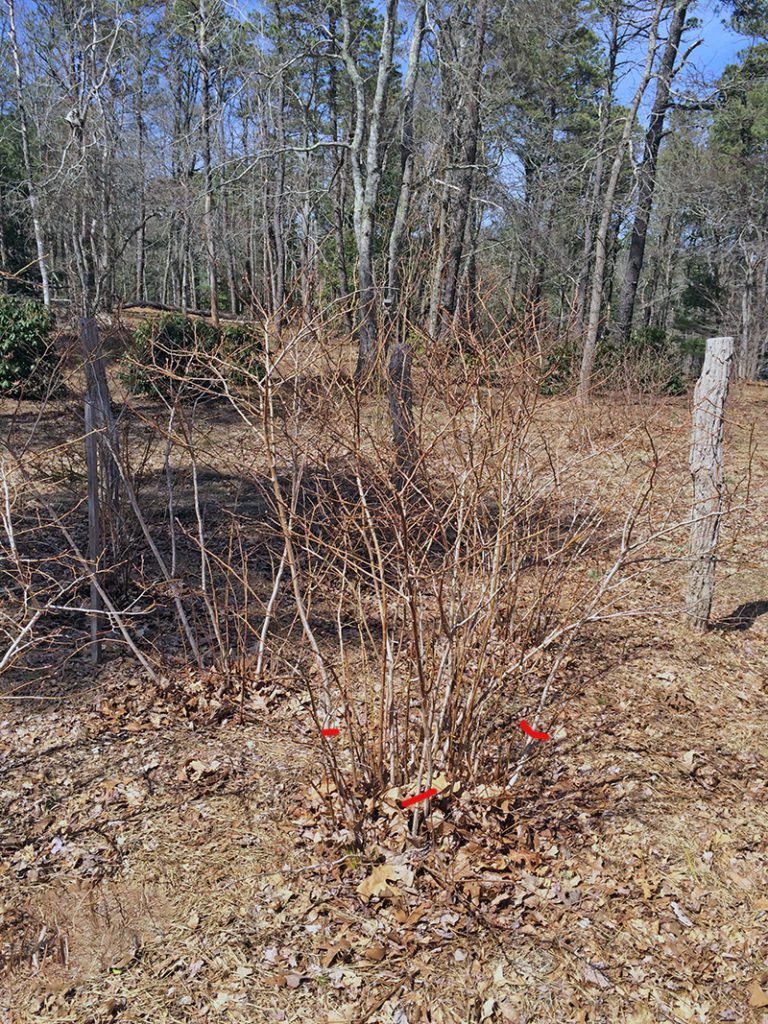
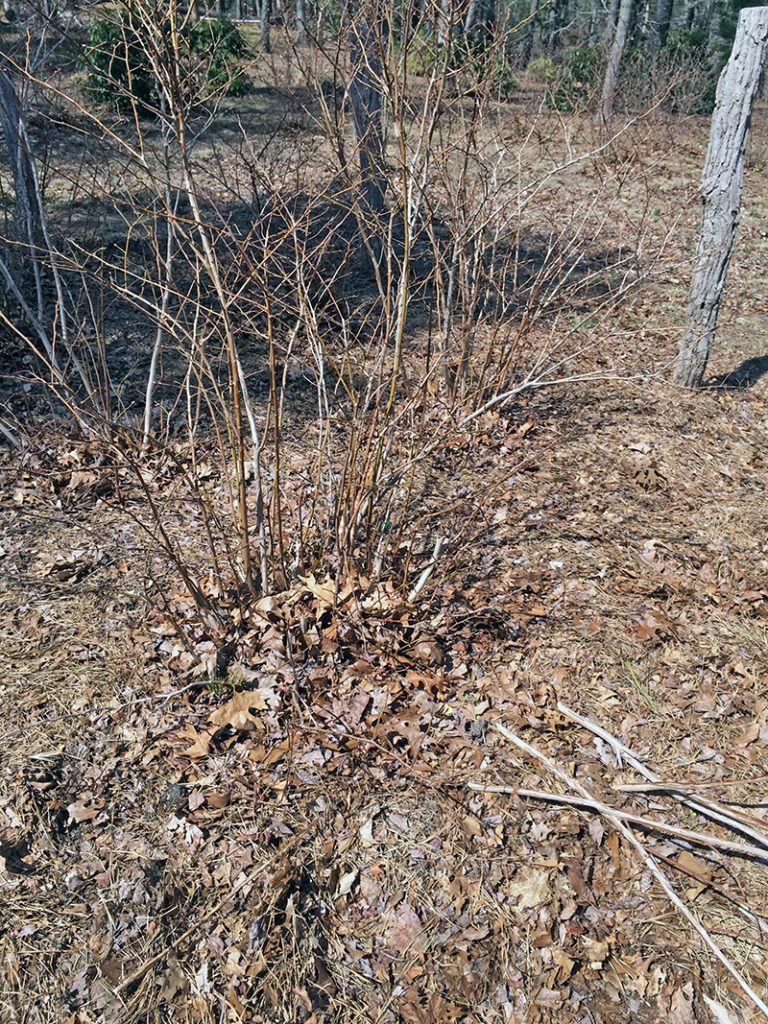
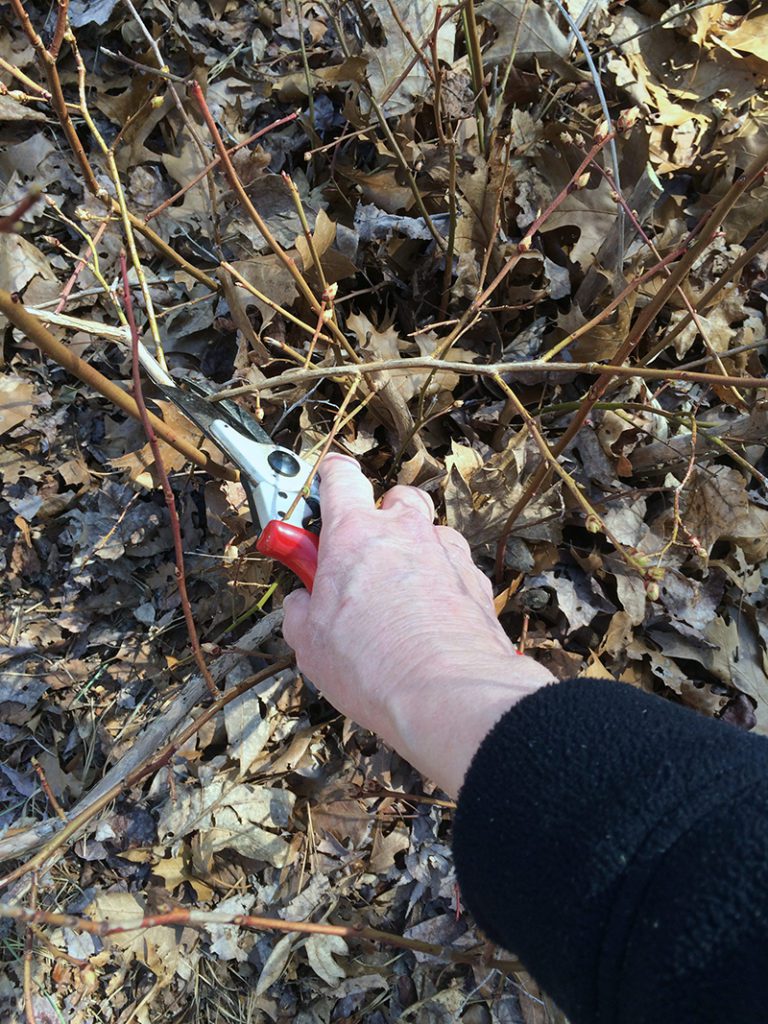
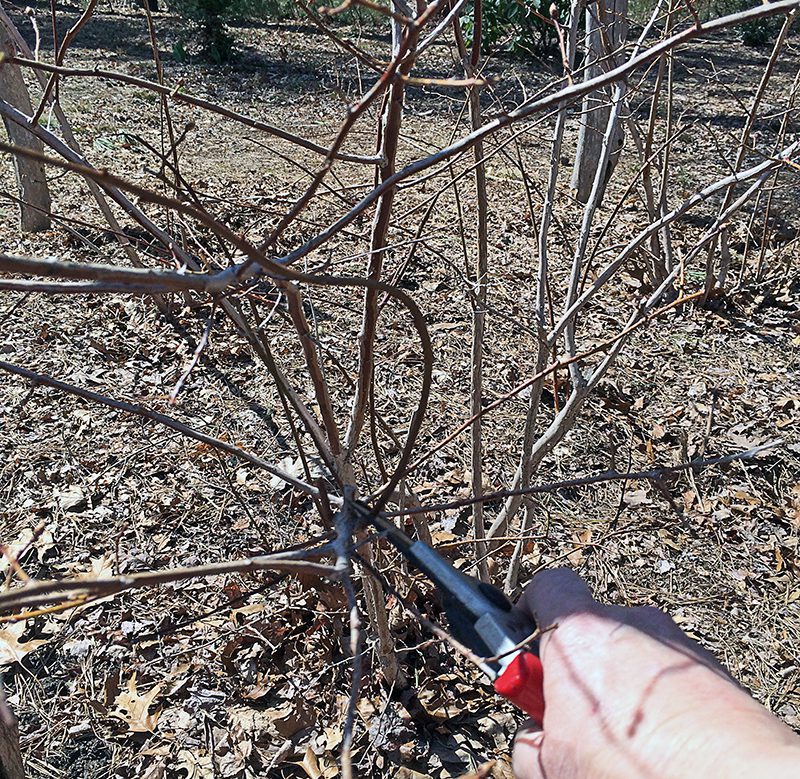
At the end of a blueberry pruning you should have removed between 1/8th to 1/4 of the plant’s total growth. This should be done every year.
Note: If you bring some of the stems that you’ve cut inside, and put them in a vase of water, they will come into leaf and flower in your house, making a lovely, spring display.
Subscribe To Our Newsletter
Sign up for our weekly email about sales and events.
